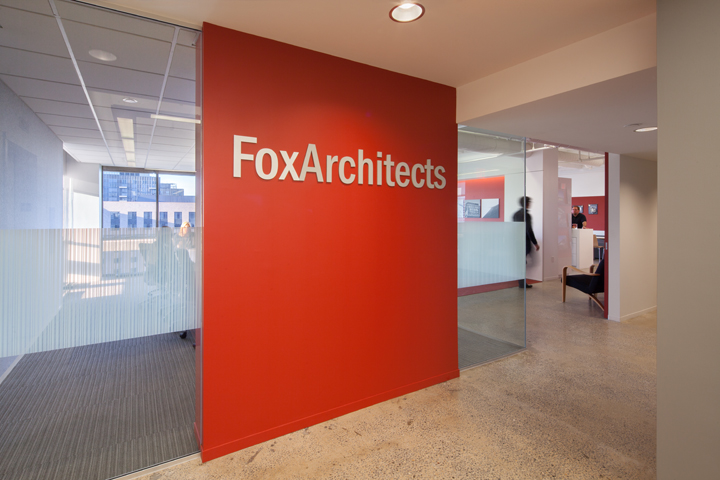
Returning to the Office: Lessons Learned.
Content composed by John Berendzen, AIA, NCARB.
With space for 26 people in an approximately 7,300 SF office, Fox Architects is a relatively small business. Although the majority of our 22 person staff remains working from home, five people returned to the office on May 18. A month later, we average around eight people per day and expect the overall office numbers to increase as people feel comfortable returning to the workplace.
Right now, flexibility is the order of the day. As architects and designers, we are accustomed to modifying plans. When the Fox team designs a building, we spend thousands of hours planning, discussing, reviewing, and testing the design, both in house and with our clients. Countless virtual walk-throughs of the space are performed. Yet, when people inhabit the space, they alter or tweak the space to better meet their needs. Again, flexibility is key.
So, too, is flexibility vital to returning to the post-COVID-19 workplace. Prior to our return, Fox leadership researched the various recommendations and guidelines, creating an action plan to ensure the safety of our team and visitors. Once the space was occupied, however, we discovered areas where our plan needed adjustments or adaptations. After a month of being back in the office, below are some of the lessons learned:
- Balance. How does a business, especially one focused on design, balance the ubiquity of sanitizing products with an office aesthetic? Recommendations necessitates disinfectants, masks, and sanitizing sprays/wipes to be easily accessible at various locations. However, leaving boxes of supplies on the counter for three weeks was unnecessary. Doing so made the cleaning products became the focal point of the space, which is not the objective. Find designated spaces for supplies and store the excess.

- Interact. To meet social distancing requirements, occupied workstations are six feet or more apart. While seemingly small, this distance has limited spontaneous interactions and enabled silos to develop. To counteract, organize the occasional stand up/round up. The Fox team gathers around one of the stand-up tables in the office, observing social distancing requirements, and chats. Whether about our latest project or the latest ridiculous thing our pet did to make us laugh, we interact and engage and inspire. Plan frequent interactions to collaborate and connect.
- Cultivate. Our “spaceman” graphic at the front entry (inspiration from Adnan and illustration by Jeremy) is a perfect way to reinforce community and focus on everyone at Fox, not just those in the office. Every office should find a way to emphasize and strengthen the office culture.
- Create. Noise, that is. With more than half the office working remote, background noise the office is minimal. Where it once sometimes distracted, now the office often seems too quiet, which is also a distraction. Consider streaming music or a podcast for background noise. Here at Fox, Bob plays an Oldies station through his speakers (those who know Bob know that he abhors dead air). Offices are not libraries. Liven it up, make some noise.
- Automate. Automate wherever you can to minimize the risk of multiple hands touching the same surface. Janet purchased a rechargeable automatic soap dispenser at the kitchen sink to limit the number of things people touch that then have to be disinfected. From touchless door openers to automated dispensers, utilize technology to minimize risk.
- Test. Not all products are built to the same standards. For example, Fox found some thermometers work well while others are finicky. Consider having at least two. Test products before implementing in the office.
- Remind. Post office expectations and the rules for occupancy in multiple places. Concepts are easier to remember when they are clearly and consistently visible. Create visual reminders and place throughout the office to reinforce requirements.

As more people return to the office, we anticipate additional modifications. I, for one, am glad to be back.